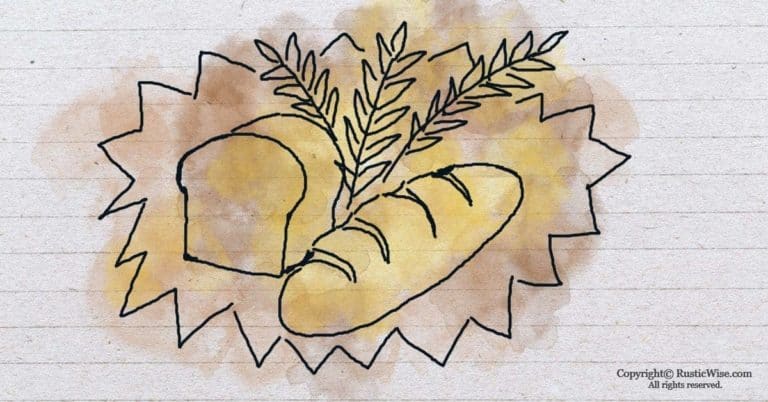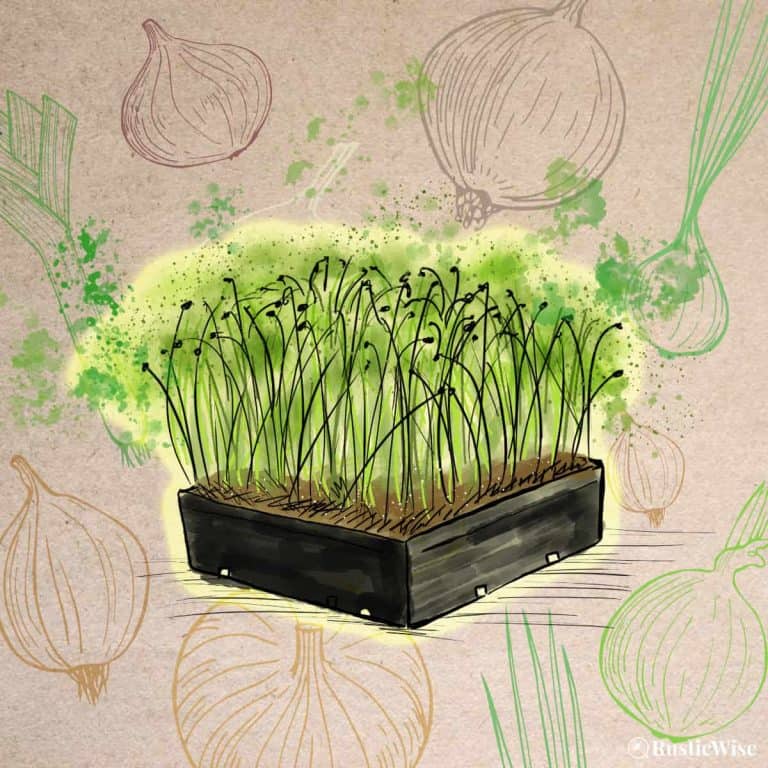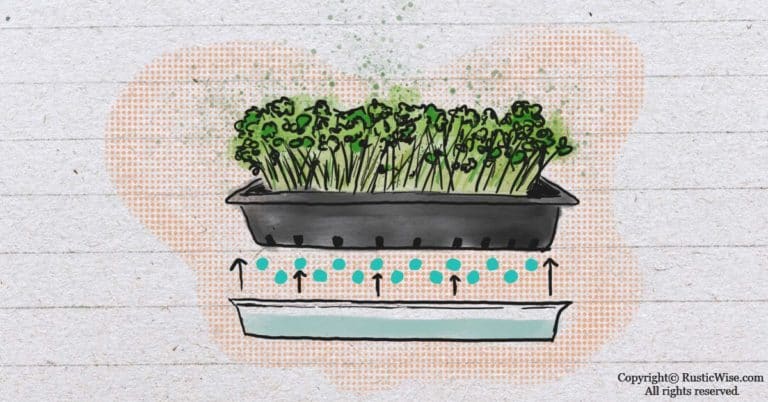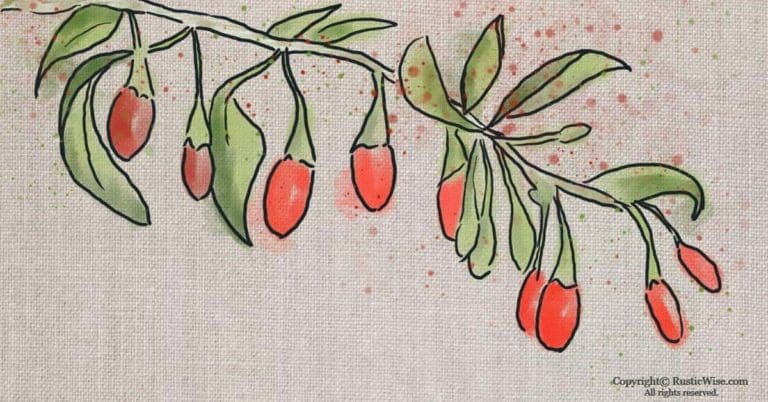10 Best Tasting Microgreens You Need To Try
Want to get back to nature and grow your own food? More and more people are turning to growing microgreens at home. Quick to grow, you can grow micros indoors all year round, even if you’re short on space.
So which varieties are the tastiest? While taste is definitely subjective, the following are our favorites.
Here are 10 best tasting microgreens you should add to your must-try list: arugula, basil, beet, broccoli, corn shoots, pea, mustard, radish, sorrel, and sunflower.
They’re organized into different flavor categories, from sweet to spicy, depending on what you’re looking for. Let’s take a delicious tour through various flavor profiles of these top microgreens, and how to use them!
A closer look at microgreens: tiny greens big on nutrition
Microgreens are the small seedlings of various herbs and vegetables harvested shortly after germination. Smaller than baby leafy vegetables, but larger than sprouts, microgreens are their own unique category of food.
Most growers harvest micros when only a few inches tall. At this young stage of growth, they contain the cotyledons (or seed leaves) which are chock-full of nutrients, antioxidants, and vitamins.
Many studies point to the many health benefits of microgreens. A 2012 study examined 25 types of commercially grown microgreens and found that they contain anywhere from 4 to 40 times the levels of vitamins and carotenoids as the same leaves from mature plants. On average, most microgreens contain 5 times as much nutrients.¹
What’s so great about microgreens, anyway?
If you’re wondering what the fuss is about microgreens, here are a few solid reasons to include these mini greens in your diet.
- Nutritional powerhouse: Microgreens are touted for their health benefits and are popular among those looking to add more nutrients to their diet. If you’re one of the many people who are trying to increase the amount of healthy vegetables you consume each day, microgreens can help you do just that. But instead of eating giant bowls of leafy greens, you can consume a handful of micros and experience similar benefits.
- Requires little space to grow: Microgreens are a fun and easy way to grow your own food right at home. Even if you only have an empty windowsill or countertop, you can grow your own food source. This is why many urban gardeners have turned to microgreen production.
- Quick growing: Unlike fully grown crops, microgreens are ready to eat in just a fraction of the time. Many types are ready to harvest in under 2 weeks, while slower growing varieties may take up to 1 month.
- Tasty: Many microgreens are packed with flavor and some are more potent than their full-grown versions. There are many microgreens with their own unique nutritional benefits, tastes, and textures. They’re easy to incorporate into soups, salads, and sandwiches.
Tips on discovering your favorite microgreens
While we’ve rounded up our favorites, there are oodles of other micros waiting to be discovered.
We recommend trying microgreens at different stages of growth. Some micros can develop a bitter taste if left to grow too long. So, if you have eaten a variety that was off-putting, perhaps try it again at an earlier stage of growth.
Microgreens taste similar to the vegetables they come from, although many have more potent flavors.
The best part is that there are so many options with microgreens. You can try different microgreen seeds and even mix and match different ones that complement each other (and have a similar grow cycle). Or, you can buy premixed seeds from seed suppliers.
Microgreens are a great way to add a peppery or nutty taste to your food and spice up meals in a nutritious way!
What are the best tasting microgreens? Here’s our top 10
It was hard to narrow it down, but the following roundup of 10 micros should satisfy most cravings.
Top nutty flavored micro

Credit: Deposit Photos
1. Sunflower microgreens
The sunnie tops the list for many people because of its undeniably pleasant nutty flavor and crunchiness.
Sunflower shoots grow larger than most other micros, making them a great choice to use as a salad base. Use it like a leafy green and spruce up sandwiches or wraps. You can also lightly sauté them.
Health highlights: Packed with healthy fats (omega-3s and omega-6s), sunflower shoots also contain all amino acids. Sunflower greens are rich in vitamins K, A, C, B6.²
Growing notes: Black oil seeds are the best for growing vibrant sunnies. Seeds require a few extra steps before sowing: presoak and presprout for best results.
Top bold and spicy micros
Looking to add a dash of spice to your favorite dish? Look no further than these piquant microgreens.
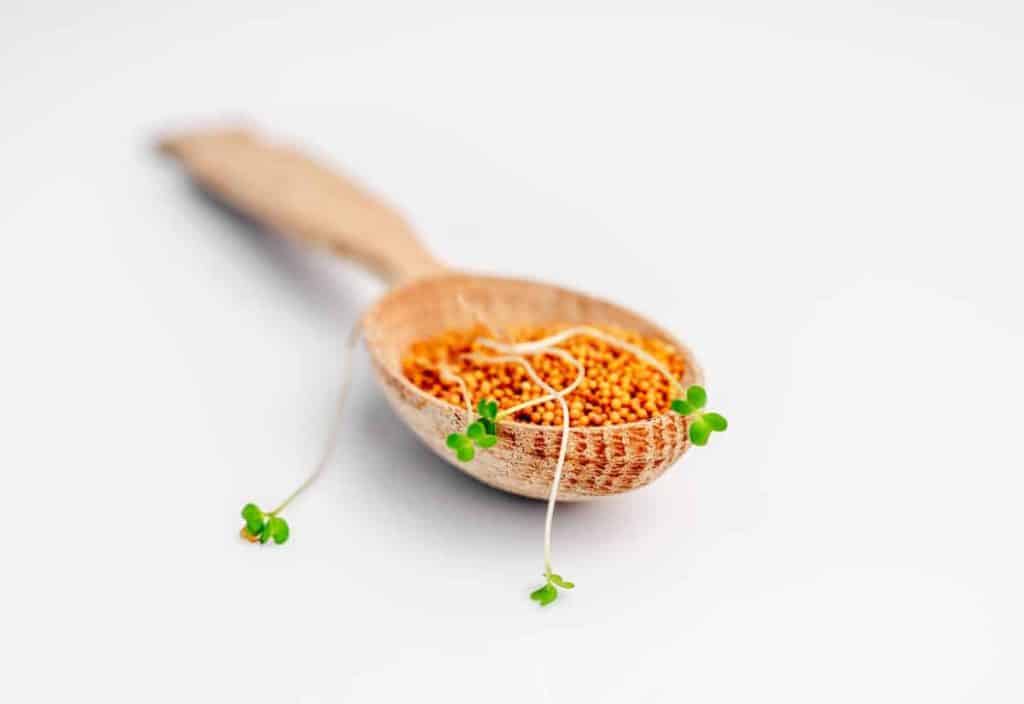
Credit: Yay Images
2. Mustard microgreens
Oriental mustard seeds are one of the spiciest varieties to grow. There’s also red mustard varieties and wasabina. With a roaring flavor similar to horseradish, a little goes a long way.
Add a dash of mustard as part of your salad greens. Since this flavor is intense, you might like to mix it with milder tasting greens.
Health highlights: A significant source of plant-based protein. Mustard micros are also a packed with vitamins A, B6, C, E, and K. You’ll also find niacin, phosphorus, dietary fiber, thiamin, riboflavin, calcium, iron, magnesium, potassium, copper and manganese.²
Growing notes: One of the fastest growing microgreens, mustard is ready to harvest in about 1 week.
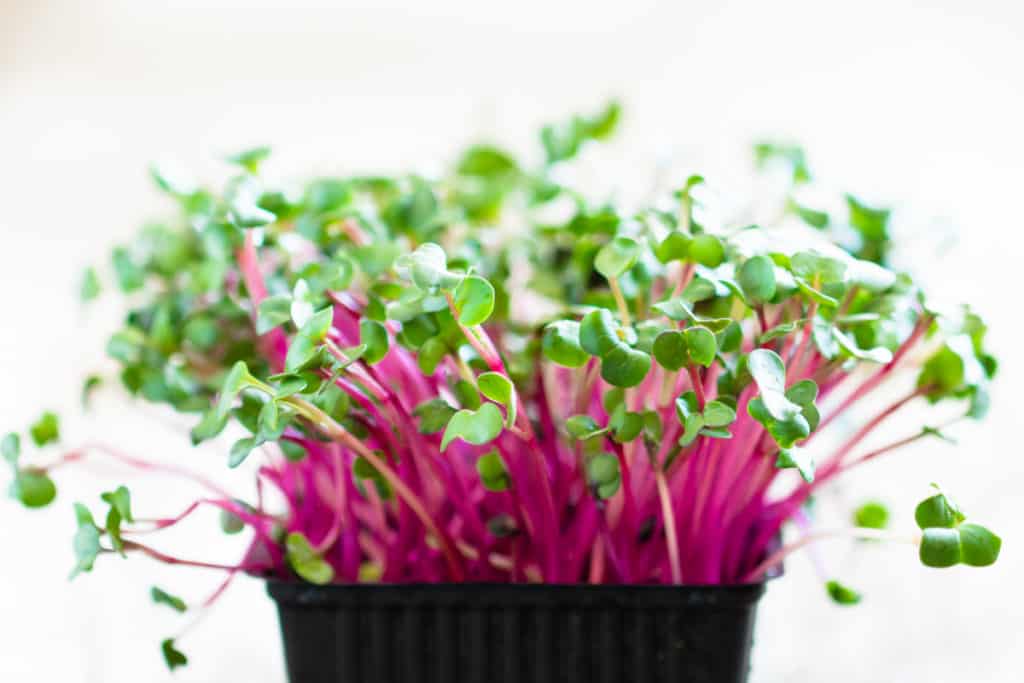
Credit: Deposit Photos
3. Radish microgreens
Sharp, peppery, and crisp, radish microgreens have a spicy flavor similar to the mature version of the plant.
There are many varieties of radish to grow, including daikon, red stem varieties, and red rambo (a purple-colored cultivar).
Daikon radish microgreens have white stems and pale green leaves. They are often used to complement many Asian cuisine dishes like sushi or stir-fry. Use a sprinkling of radish as a garnish on savory dishes. Or, add a dash to spice up your salad mixes.
Health highlights: In a 2012 study, daikon radish showed exceptionally high levels of vitamin E when compared to 24 other varieties of microgreens.¹ Radish also contains vitamins A, B6, C, and K, calcium, iron, magnesium, phosphorous, potassium, protein, and zinc. It contains essential amino acids and dietary fiber.
Growing notes: An easy to grow and quick growing micro that’s ready to harvest in 6–14 days, depending on the variety.
4. Arugula microgreens
Less potent than mustard or radish micros, arugula still has peppery notes, with a bit of an earthy, nutty undertone to mellow it out.
It’s no surprise that the micro version of the plant is great as a salad green, just like the mature leaves. Try adding a handful of arugula to your favorite pesto recipe.
Health highlights: Packed with antioxidants and all your essential amino acids. Arugula is an excellent source of vitamins A, B, C, and EE, along with calcium, iron, magnesium, niacin, phosphorus, potassium, and protein.
Growing notes: Arugula micros are a bit more difficult to grow as the seeds aremucilaginous. They form a gel-like sac around each seed when it comes into contact with water.
Best herb microgreens
This is a category of microgreens that’s often overlooked. These offer something unique and flavorful to put the finishing touch on your dishes. Herb micros typically grow more slowly than other vegetable seeds.
5. Basil microgreens
There are many types of basil seeds to choose from, including sweet basil, Genovese, Italian, and dark opal. With a great flavor that’s both sweet and spicy, basil is the perfect garnish.
Add a handful of basil to add a flavor dimension to plain salads. Use as a garnish atop pizza, pesto, and Italian dishes.
Health highlights: A great source of vitamin K and omega-3s and omega 6-s. It also contains vitamins A and C, along with calcium, iron, magnesium, and manganese.
Growing notes: Another gelatinous/mucilaginous seed that’s tricky to grow (but well worth the extra effort). Avoid over-misting in the germination phase.
6. Sorrel microgreens
Sometimes a refreshing, tangy, citrus splash is just what you’re looking for. Sorrel is also called dock. Sorrel microgreen seeds come in a flashy red-veined variety, and French green.
Brighten up soups, stews, salads, omelets, and savory fish dishes. Sorrel also makes a unique and unexpected dessert garnish.
Health highlights: Very high in vitamins A and C, powerful antioxidants. Vitamin C combats oxidative stress in the body and helps rebuild body tissues. Vitamin A promotes healthy vision and immunity.
Growing notes: A slow growing herb micro which can take up to 30 days until it’s ready for harvesting.
Best sweet and fresh microgreens
The word “sweet” isn’t the first term that pops up when you think of vegetables. However, these two micros are crowd-pleasers for their fresh and sugary notes.
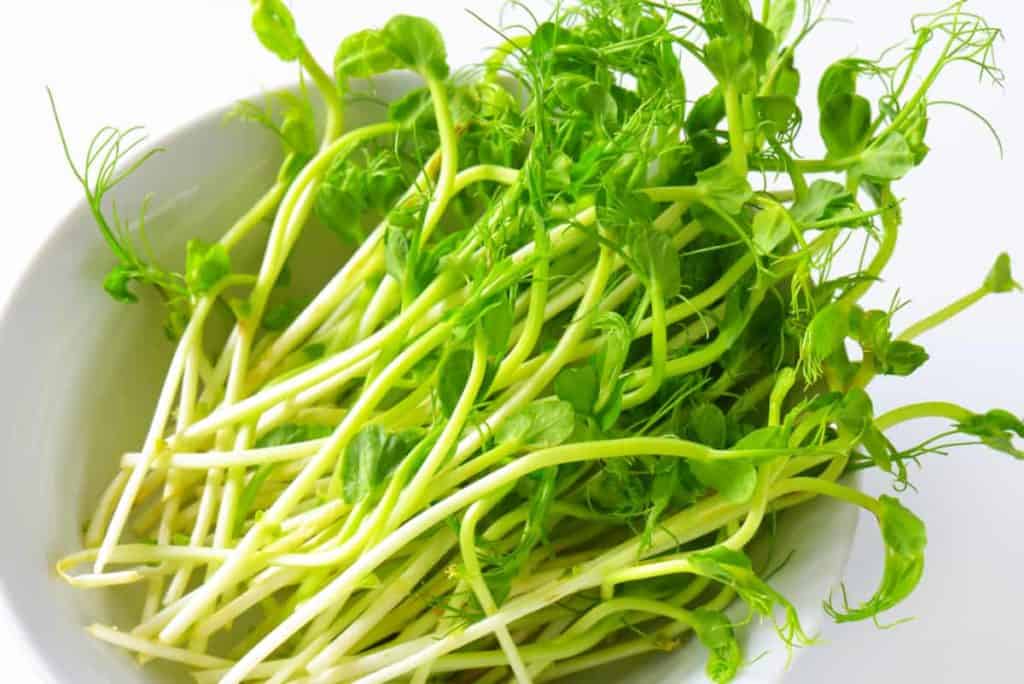
Credit: Yay Images
7. Pea microgreens
Peas shoots are a favorite amongst many for their crunchy, garden pea flavor. They grow larger than most varieties of micros (until the the true leaves appear) and are one of the few that taste good when lightly sautéed as well as when eaten raw.
Pea micros make a great salad base and pair nicely with sunflower shoots. They also go hand-in-hand with the flavors of Asian cuisine.
Health highlights: Need a boost of vitamin C? You’ll find plenty in pea shoots, along with vitamins A, B-complex, and E. Peas also contain a substantial amount of protein, fiber, and omega-3s.
Growing notes: Pea shoots sometimes regrow after harvesting; you might enjoy more than one batch of peas per tray! Pea seeds are larger and do best when presoaked and presprouted. Ready to harvest in 10–14 days.
8. Corn shoots
Also known as popcorn shoots, corn shoots are delightful snacks that are tasty all on their own. Sweet and crunchy, these taste like sweet corn-on-the-cob.
Corn shoots pair nicely with desserts. Add a sweet note to eggs, pizza, salads, and sandwiches.
These unique shoots have a pale, straw color as they are lacking the chlorophyll of other micros.
Health highlights: You’ll find plenty of protein, dietary fiber, iron, and calcium, along with vitamins A, B, C, and E.
Growing notes: Unlike other micros, corn shoots grow best in the absence of light. Exposure to light will cause these shoots to lose their sweetness and turn bitter.
Mild and versatile
Sometimes you just want something that complements a dish without overpowering it. These mild and versatile micros fit the bill. Don’t mistake the term mild for boring. These tiny greens are also tasty all on their own.
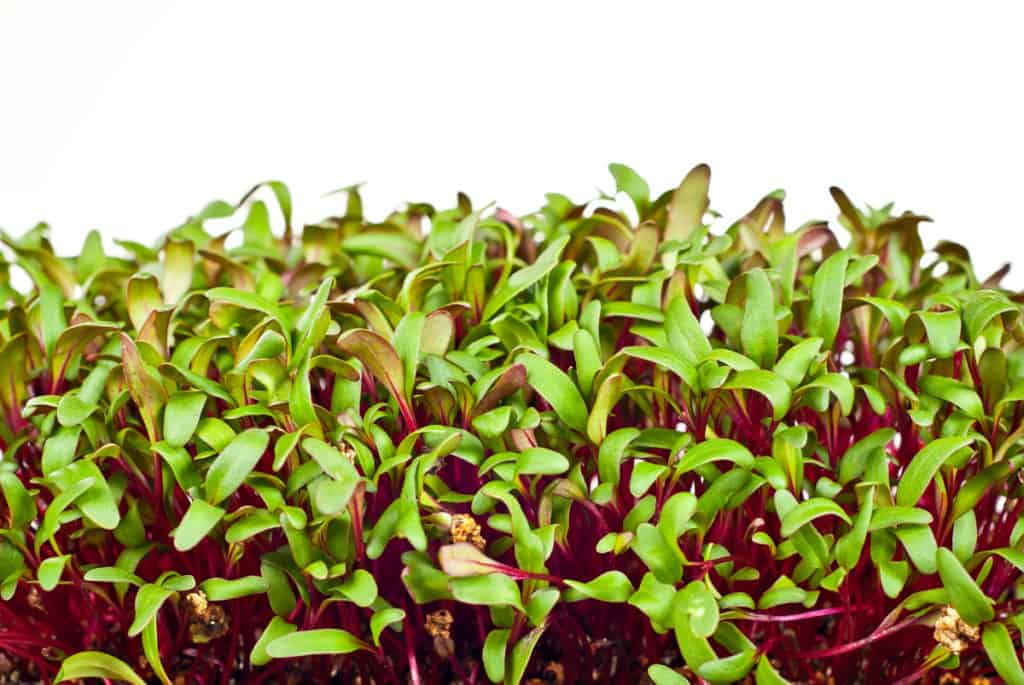
Credit: Deposit Photos
9. Beet microgreens
Beet micros have a mild, sweet, and earthy flavor with a tender texture that pairs well with most dishes.
Sprinkle beet microgreens onto avocado toast. Garnish root vegetable dishes, or cheese and nut platters. Liven up your salads, sandwiches and wraps.
Bull’s blood and red varieties are popular types of microgreens to grow as they’re visually stunning with pink-red stems and bright green leaves. There are also yellow beet seeds which produce tiny green leaves with yellow stems.
Health highlights: Beet leaves contain exceptionally high levels of vitamin K. Just 100 grams of beet greens contain 333 percent vitamin K of the recommended Daily Value. It also contains vitamins A, C, and E, along with copper, magnesium, manganese, potassium, iron, and calcium.
Growing notes: Beet seeds are bumpy and irregular and seem to grow better on soil (or a soilless medium) rather than grow mats.
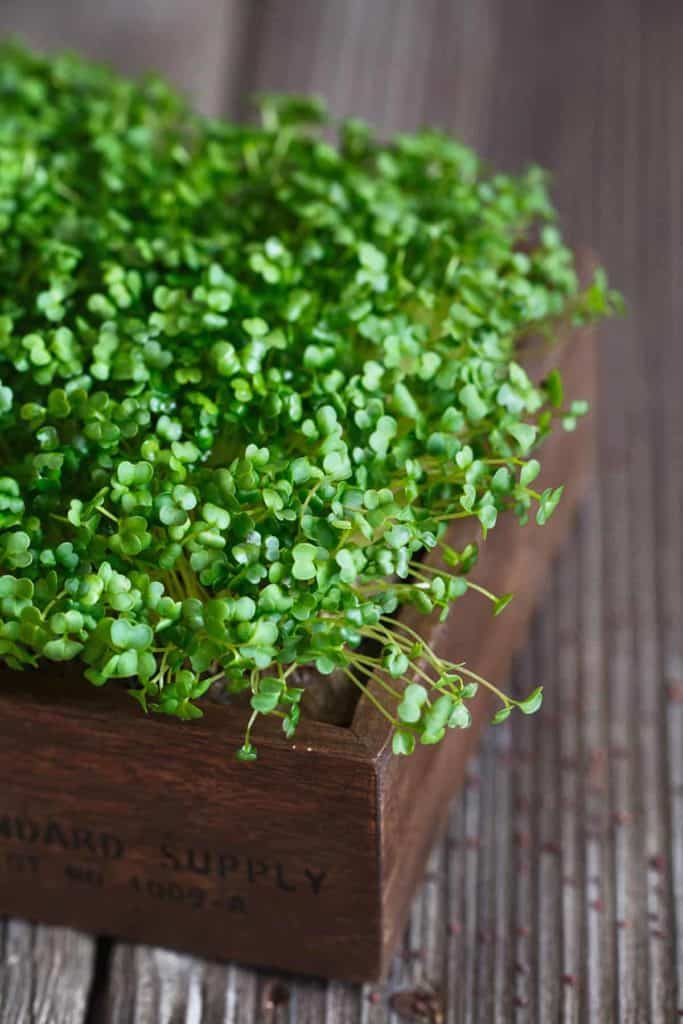
Credit: Deposit Photos
10. Broccoli microgreens
While broccoli doesn’t sound exciting, broccoli microgreens make a healthy addition to your diet. With a mild earthy flavor with a hint of spice common in Brassicas, broccoli micros are versatile.
They are a popular addition to green juices or smoothies as they produce sulforophanes, powerful cancer-fighting agents when blended.
Health highlights: One of the most nutrient-dense Brassica vegetables. Broccoli offers a significant amount of plant-based protein, along with calcium, iron, magnesium, phosphorus, potassium, zinc, carotene, and chlorophyll. Stock up on your vitamins A, B, C, E, and K.
Growing notes: An easy to grow seed that’s ready to harvest in under 2 weeks. Many Brassicas develop tiny root hairs which are often mistaken for mold.
Smoothie-friendly microgreens
A popular way to enjoy micros is in healthy smoothies or juices. While you really can’t go wrong with any variety, the best microgreens for smoothies lean towards sweet or mild (and not spicy).
The following microgreens pair well with many smoothies without affecting the flavor: pea shoots, sunflower microgreens, and broccoli.
To help decide which microgreens would be best for your next smoothie, check out this detailed guide on Best Microgreens for Smoothies.
👉 If you like this post, see our Complete Guide to Growing Microgreens at Home. 🌱
Would you like more timeless tips via email?
Fun tips to help you live an independent, self-sustaining lifestyle. Opt-out at any time.


References
- Lester, Gene & Xiao, Zhenlei & Luo, Yaguang & Wang, Qin. (2013). Microgreens: Assessment of Nutrient Concentrations. Journal of Agricultural and Food Chemistry. https://dx.doi.org/10.1021/jf300459b
- Nutrition Data, Various vegetables, https://nutritiondata.self.com/. Accessed November 2022.

Author: Theresa Tesolin
Theresa is co-founder of RusticWise. She helps people unleash their inner DIY spirit by encouraging them to get dirty and make or grow something from scratch.


